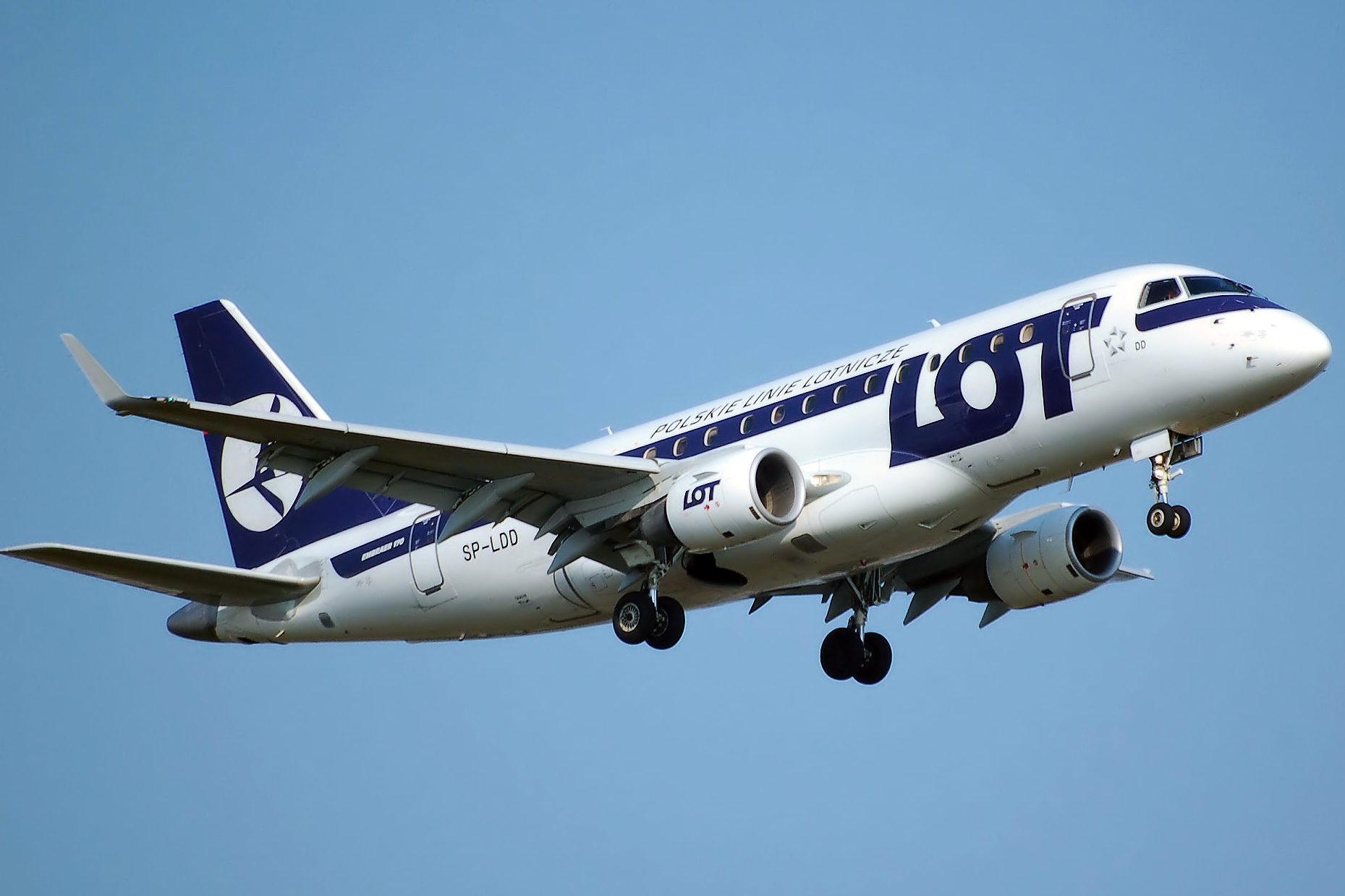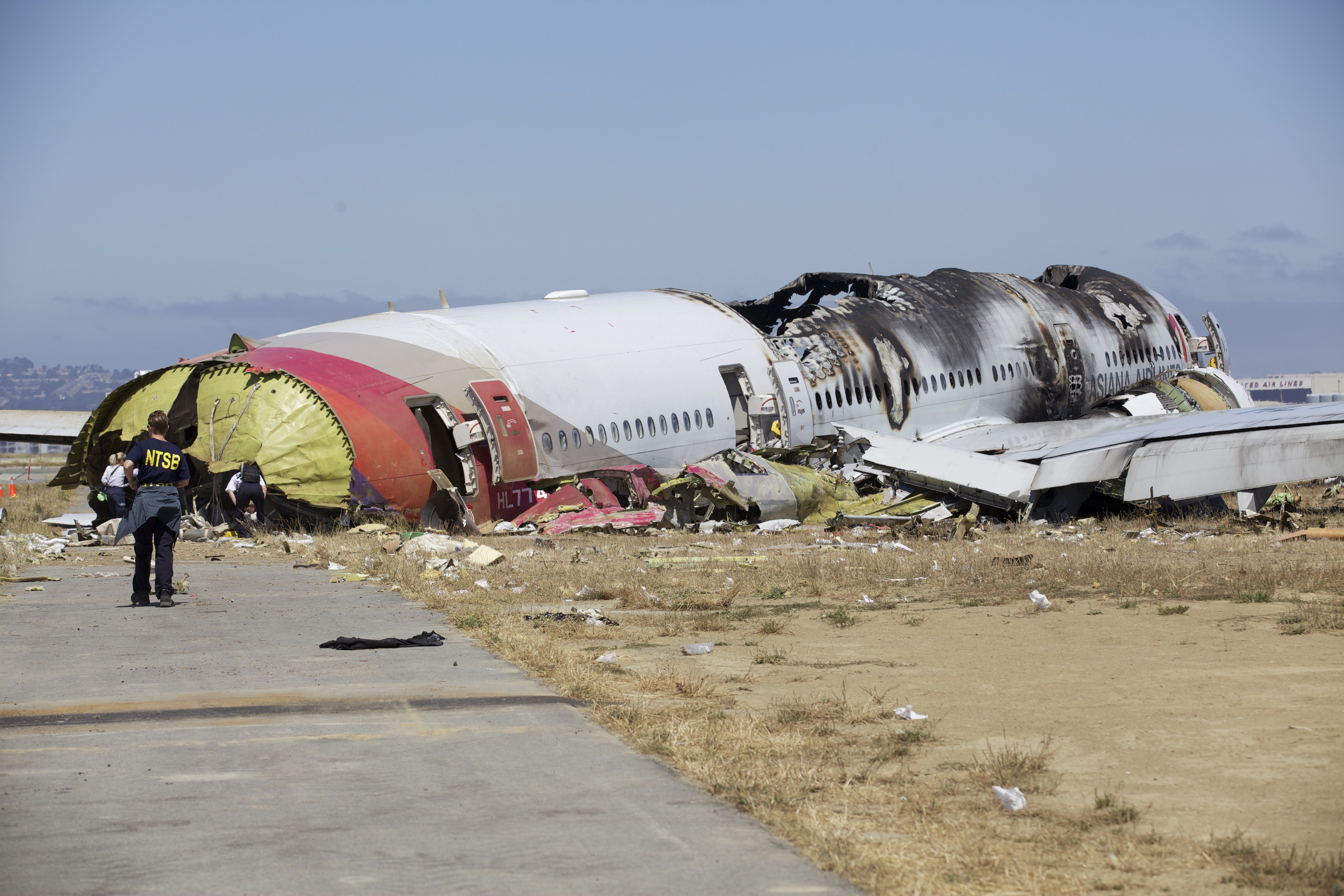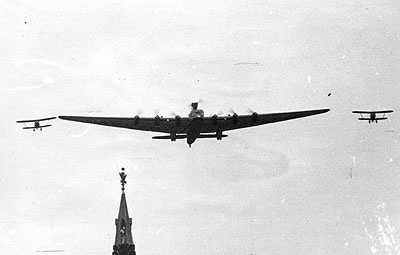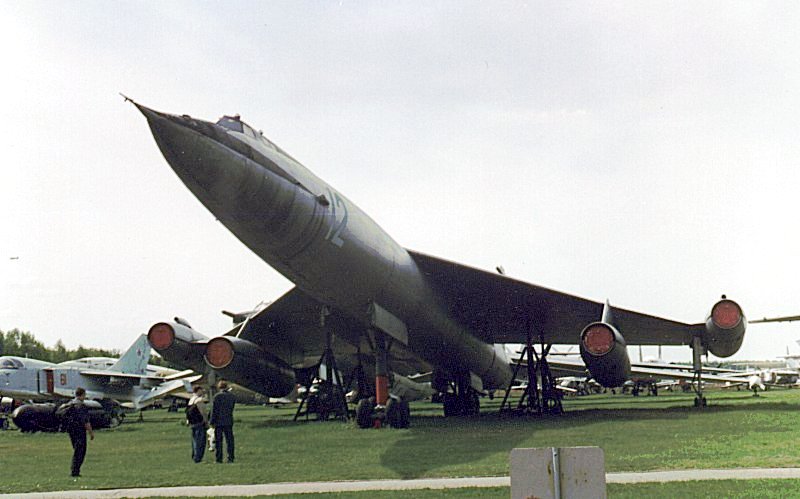|
Sukhoi Superjet 100
The Yakovlev SJ-100 (until August 2023: Sukhoi Superjet 100 SJ100 ) is a regional jet originally designed by the now-merged Russian aircraft company Sukhoi Civil Aircraft, a division of the United Aircraft Corporation (now: "Regional Aircraft" company branch). With development starting in 2000, it made its maiden flight on 19 May 2008 and its first commercial flight on 21 April 2011 with Armavia. The MTOW plane typically seats 87 to 98 passengers. Aircraft built before 2025 are powered by two PowerJet SaM146 turbofans developed by a joint venture between French Safran and Russian NPO Saturn. By May 2018, 127 aircraft were in service, and by September the fleet had logged 300,000 revenue flights and 460,000 hours. By November 2021 the fleet had logged at least 2 million hours. The type has recorded four hull loss accidents and 89 deaths . In 2022, Sukhoi announced a Russified version of the body and electronics, without most of the Western components. The engines were al ... [...More Info...] [...Related Items...] OR: [Wikipedia] [Google] [Baidu] |
Regional Jet
A regional jet (RJ) is a jet airliner, jet-powered regional airliner usually defined by having fewer than 100 seats. The first aircraft considered part of this category was the Sud-Aviation Caravelle in 1959, followed by Douglas DC-9, BAC One-Eleven, Yakovlev Yak-40, Fokker F28, and BAe 146. The 1990s saw the emergence of the Canadair Regional Jet and Embraer Regional Jet families, followed by the larger Embraer E-Jet and multiple competing projects. This time period also saw the bankruptcy of Fokker in 1996 and departure of BAE Systems from the market in 2001, significantly reducing the number of RJ manufacturers. Market consolidation continued as Bombardier Aviation sold its airliner programs between 2017 and 2019, leaving Embraer as the sole large independent regional jet manufacturer with its Embraer E-Jet E2 family. Comac of China introduced the C909 (at the time ARJ21) jet to fill China's missing regional industry since the retirement of the DC-9. Antonov of Ukraine w ... [...More Info...] [...Related Items...] OR: [Wikipedia] [Google] [Baidu] |
Hull Loss
A hull loss is an aviation accident that damages the aircraft beyond economic repair, resulting in a total loss. The term also applies to situations where the aircraft is missing, the search for its wreckage is terminated, or the wreckage is logistically inaccessible. The aviation industry uses the metric of "hull losses per 100,000 flight departures" to measure the relative risk of a given flight or aircraft. There is no official ICAO or NTSB definition. From 1959 to 2006, 384 of 835 hull losses were non-fatal. Constructive hull loss takes into account other incidental expenses beyond repair, such as salvage, logistical costs of repairing non- airworthy aircraft within the confines of the incident site, and recertifying the aircraft. Airlines typically have insurance to cover hull loss. Their policies—like many covering assets that are subject to depreciation—typically pay the insured a formulaic used-item value. A damaged aircraft will often simply be scrapped. ... [...More Info...] [...Related Items...] OR: [Wikipedia] [Google] [Baidu] |
General Electric CF34
The General Electric CF34 is a civilian high-bypass turbofan developed by GE Aviation from its TF34 military engine. The CF34 is used on a number of business and regional jets, including the Bombardier CRJ series, the Embraer E-Jets, and Comac ARJ21/C909. In 2012, there were 5,600 engines in service. Design and development The original engine contained a single stage fan driven by a 4-stage low pressure (LP) turbine, supercharging a 14-stage high pressure (HP) compressor driven by a 2-stage HP turbine, with an annular combustor. Later higher thrust versions of the CF34 feature an advanced technology core, with only 10 HP compressor stages. Latest variants, the and , were derived from the CFM56 engine family, and have a radically different HP spool, containing a 9-stage compressor driven by a single stage turbine. The LP spool has 3 core booster stages behind the fan. Static thrust is for the variant. On wing times can reach 14,000 hours, an overhaul costs over $1. ... [...More Info...] [...Related Items...] OR: [Wikipedia] [Google] [Baidu] |
Rolls-Royce BR710
The Rolls-Royce BR700 is a family of turbofan engines for regional jets and corporate jets. It is manufactured in Dahlewitz, Germany, by Rolls-Royce Deutschland: this was initially a joint venture of BMW and Rolls-Royce plc established in 1990 to develop this engine. The BR710 first ran in 1995. The United States military designation for the BR725 variant is F130. Design and development BR710 The BR710 is a twin shaft turbofan, and entered service on the Gulfstream V in 1997 and the Bombardier Global Express in 1998. This version has also been selected to power the Gulfstream G550. The BR710 comprises a diameter single-stage fan, driven by a two-stage LP turbine, and a ten-stage HP compressor (scaled from the V2500 unit) driven by a two-stage, air-cooled, HP turbine. This engine has a thrust-specific fuel consumption (TSFC) of at static sea level takeoff and at a cruise speed of Mach 0.8 and altitude of . In May 2017, the 3,200 engines in service reached 10 million flyi ... [...More Info...] [...Related Items...] OR: [Wikipedia] [Google] [Baidu] |
Pratt & Whitney PW800
The Pratt & Whitney Canada PW800 is a series of turbofan engines in the thrust class, manufactured by Pratt & Whitney Canada. Intended for the regional jet and business jet market, the gear-less PW800 shares a common core with the larger, geared PW1000G. The first variants were certified on February 15, 2015, to power the new Gulfstream G500/G600. A later variant was certified in 2021 for the Dassault Falcon 6X. Development The development of the PW800 stretches back to demonstration projects in 1999, soon after the development of the PW600 very light engine and the PW300 business jet engine. After the Advanced Technology Fan Integrator demonstrator first ran on March 17, 2001, which became the PW1000G, Pratt & Whitney Canada was searching for a launch customer for the initially geared PW800, in the thrust range, bridging the gap between P&WC's PW300 and P&W's PW6000, intended for the regional- and business-jet engine market. The PW800 core was to be the basis for the ... [...More Info...] [...Related Items...] OR: [Wikipedia] [Google] [Baidu] |
Rosaviakosmos
The State Corporation for Space Activities "Roscosmos", commonly known simply as Roscosmos (), is a State corporation (Russia), state corporation of the Russian Federation responsible for space science, space flights, List of space agencies, cosmonautics programs, and aerospace research. Originating from the Soviet space program founded in the 1950s, Roscosmos emerged following the dissolution of the Soviet Union in 1991. It initially began as the Russian Space Agency,, ''Rossiyskoye kosmicheskoye agentstvo'', or RKA (). which was established on 25 February 1992 and restructured in 1999 and 2004 as the Russian Aviation and Space Agency, ''Rossiyskoye aviatsionno-kosmicheskoye agentstvo'', commonly known as (), established on 25 May 1999. and the Federal Space Agency (Roscosmos), (Роскосмос), ''Federalnoye kosmicheskoye agentstvo (Roskosmos)''. respectively. In 2015, the Federal Space Agency (Roscosmos) was merged with the United Rocket and Space Corporation, ... [...More Info...] [...Related Items...] OR: [Wikipedia] [Google] [Baidu] |
Tupolev Tu-414
Tupolev ( rus, Туполев, , ˈtupəlʲɪf), officially United Aircraft Company Tupolev - Public Joint Stock Company, is a Russian aerospace and defence company headquartered in Basmanny District, Moscow. UAC Tupolev is successor to the Soviet Tupolev Design Bureau (OKB-156, design office prefix ''Tu'') founded in 1922 by aerospace pioneer and engineer Andrei Tupolev, who led the company for 50 years until his death in 1972. Tupolev designed over 100 models of civilian and military aircraft and produced more than 18,000 aircraft for Russia, the Soviet Union and the Eastern Bloc since its founding, and celebrated its 100th anniversary on 22 October 2022. Tupolev is involved in numerous aerospace and defence sectors including development, manufacturing, and overhaul for both civil and military aerospace products such as aircraft and weapons systems, and also missile and naval aviation technologies. In 2006, Tupolev became a division of the United Aircraft Corporation in a mer ... [...More Info...] [...Related Items...] OR: [Wikipedia] [Google] [Baidu] |
Tupolev
Tupolev ( rus, Туполев, , ˈtupəlʲɪf), officially United Aircraft Company Tupolev - Public Joint Stock Company, is a Russian aerospace and Arms industry, defence company headquartered in Basmanny District, Moscow. UAC Tupolev is successor to the Soviet Tupolev Design Bureau (OKB-156, Soviet Union military aircraft designation systems#Soviet system after December 9.2C 1940, design office prefix ''Tu'') founded in 1922 by aerospace pioneer and engineer Andrei Tupolev, who led the company for 50 years until his death in 1972. Tupolev designed over 100 models of civilian and military aircraft and produced more than 18,000 aircraft for Russia, the Soviet Union and the Eastern Bloc since its founding, and celebrated its 100th anniversary on 22 October 2022. Tupolev is involved in numerous aerospace and defence sectors including development, manufacturing, and overhaul for both civil and military aerospace products such as aircraft and weapons systems, and also missile and nava ... [...More Info...] [...Related Items...] OR: [Wikipedia] [Google] [Baidu] |
Myasishchev
V. M. Myasishchev Experimental Design Bureau (Экспериментальный Машиностроительный Завод им. В. М. Мясищева) or OKB-23, founded in 1951 by MGB UdSSR Vladimir Mikhailovich Myasishchev, Vladimir Myasishchev, was one of the chief Soviet Union, Soviet aerospace design bureaus until its dissolution in 1960. Vladimir Myasishchev went on to head TsAGI. In 1967, Myasishchev left TsAGI and recreated his bureau, which still exists to this day. The bureau prefix was "M." , its workforce is estimated at approximately one thousand. Myasishchev and NPO Molniya intend to use the V-MT or M-55 as launch vehicle for sub-orbital spaceflight. In July 2014, the merger of Myasishchev and Ilyushin to create a single modern production complex was announced by the Board of Directors of OAO Il. Products 1940-1960 *Myasishchev DVB-102, VM-1/DVB-102: prototype long-range, high-altitude bomber, 1940 **VM-2: projected version of VM ... [...More Info...] [...Related Items...] OR: [Wikipedia] [Google] [Baidu] |
Russian Government
The Russian Government () or fully titled the Government of the Russian Federation () is the highest federal executive governmental body of the Russian Federation. It is accountable to the president of the Russian Federation and controlled by the State Duma. The status and procedure of its activities are determined by chapter 6 of the Constitution of the Russian Federation and the provisions of the federal constitutional law "On the Government of the Russian Federation". The Government's terms of reference include the development and enforcement of the federal budget and the implementation of socially oriented government policies in various cultural areas of Russian society. Although the Government of the Russian Federation does not adopt laws, its responsibilities include issuing federal by-laws (resolutions) based on federal laws passed by the Federal Assembly. According to the 1991 amendment to the 1978 constitution, the president of Russia was the head of the executi ... [...More Info...] [...Related Items...] OR: [Wikipedia] [Google] [Baidu] |
Commonwealth Of Independent States
The Commonwealth of Independent States (CIS) is a regional organization, regional intergovernmental organization in Eurasia. It was formed following the dissolution of the Soviet Union, dissolution of the Soviet Union in 1991. It covers an area of and has an estimated population of 246,200,194. The CIS encourages cooperation in economic, political, and military affairs and has certain powers relating to the coordination of trade, finance, lawmaking, and security, including cross-border crime prevention. As the Soviet Union disintegrated, Byelorussian SSR, Belarus, Russian SFSR, Russia, and Ukrainian SSR, Ukraine signed the Belovezha Accords on 8 December 1991, declaring that the Union had effectively ceased to exist and proclaimed the CIS in its place. On 21 December, the Alma-Ata Protocol was signed, but Estonia, Latvia and Lithuania chose not to participate. Georgia (country), Georgia withdrew its membership in 2008 following Russo-Georgian War, a war with Russia. Ukraine f ... [...More Info...] [...Related Items...] OR: [Wikipedia] [Google] [Baidu] |








